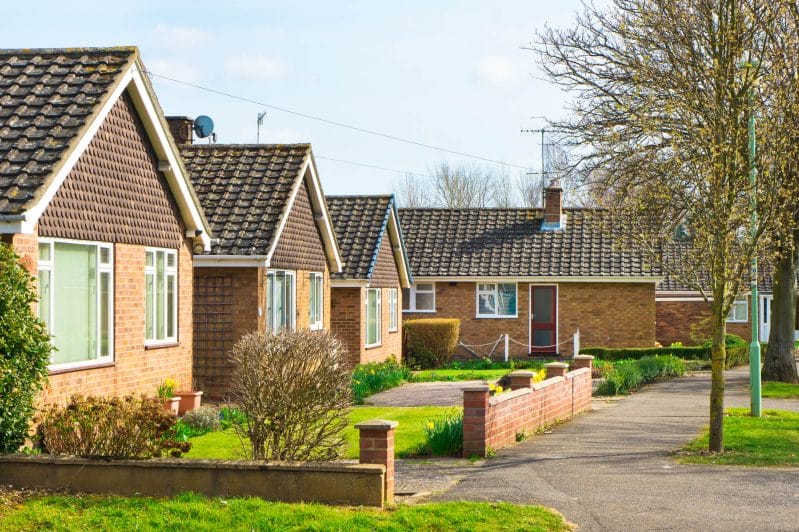The search for your ideal home may be both thrilling and overwhelming. It’s crucial to approach the process with a clear grasp of your priorities and a well-thought-out plan because there are so many aspects to take into account, from location to layout.
We’ll offer helpful tips and advice in this article, “Finding the Right Home: Important Factors and Suggestions,” to assist you confidently traverse the home-searching process. You may make well-informed choices that will ultimately lead you to the ideal home for you and your family by determining your priorities, thoroughly viewing potential homes, taking into account neighbourhood amenities and commuting distances, and trusting your intuition.
So let’s get started and investigate the essential elements that might make your property search successful and fun.
1. Identifying Your Priorities when finding the perfect home
Create a list of important factors required in your new home
A key first step in your search for a home is making a list of the features that are most essential to you. This list acts as a personalised road map to help you concentrate on the things that are most important to you and your family.
Start by coming up with categories like size, the quantity of bedrooms and bathrooms, the amount of outside area, and the architectural style.
Additionally take into account more particular qualities like storage capacity, energy efficiency, or accessibility.
Don’t forget to consider your lifestyle and how it might change over the next several years; for example, your list should take into account your plans for starting a family or for aging in place.
You may efficiently focus your search and save spending time on homes that don’t fit your criteria by creating a thorough list of priorities.
Also, you can use this list as a handy reference when contrasting various qualities so that you can make an educated choice depending on what matters to you the most.
Evaluating personal preferences and requirement
In order to discover a home that meets your own wants and preferences, it is crucial to consider your personal preferences and requirements when looking for the ideal residence.
To accomplish this, think about the features of a home that are most important to you and any features on which you are unable to compromise at all.
Choose your preferred design features and style first, such as open floor plans, historic architecture, or modern interiors.
It’s important to discuss and come to an agreement on what everyone values most in a home because it’s possible that your preferences will differ from those of your partner or family members.
Next, think about your daily habits and way of life. If you enjoy entertaining guests, a large kitchen and plenty of living space can be priorities.
A dedicated office or quiet workspace could be a crucial requirement for people who work from home.
Families with young children may require a secure, fenced-in back garden or close proximity to excellent schools, while pet owners may prioritise a neighbourhood that is pet-friendly and has easy access to green space.
Finally, keep in mind your financial limitations and budget. It’s critical to have a realistic awareness of your financial situation and to be ready to modify your preferences and needs when necessary.
In order to find a house that meets your most significant wants and objectives, this may need making concessions on some less crucial factors.
By evaluating your personal preferences and requirements, you can create a clear vision of your ideal home, making it easier to identify properties that align with your vision and, ultimately, find the perfect home for you and your family.

Balancing wants and needs
Choosing the ideal home frequently involves balancing your needs and wants. It’s normal to have a wish list of elements and conveniences you’d want to have in your new house, but it’s important to know what you actually require and what you can do without.
This distinction will assist you in making sensible choices that fit your spending plan, way of life, and long-term objectives.
Start by deciding which aspects of your ideal home are non-negotiable in order to successfully balance your goals and necessities.
These could include things like the amount of bedrooms and bathrooms, how close it is to work or school, or whether it has accessible features for members of the family who have special needs.
As they will have the biggest influence on your daily life and general contentment with your new house, make sure to give these necessities top priority.
After you’ve determined your primary necessities, consider your list of wants. These are the luxuries and conveniences for your new house that, while desired, are not strictly necessary.
A swimming pool, walk-in closet, or expensive appliances are a few examples. Although it’s normal to want the best of everything, keep in mind that it’s frequently more crucial to choose a home that satisfies your basic needs and is within your price range.
Use your list of needs and wants as a guide while assessing potential homes to help you concentrate on homes that strike the perfect mix. Be prepared to make some concessions, particularly if you’re on a tight budget or looking in a crowded market.
You’ll be more able to make selections that lead to the ideal home if you maintain flexibility and keep your primary needs in mind.
In conclusion, striking a balance between your wants and needs is a crucial part of the home-search process.
You may make sensible decisions that fit your budget and lifestyle while still leaving room for some desirable elements in your new house by differentiating between these two categories and ranking your important demands in order of importance.
2. Inspecting Potential Homes
Importance of Thorough Home Visits
A crucial step in the house hunting process is performing thorough home inspections. These visits give you the chance to look at the properties closely, evaluate their general condition, and decide whether they suit your needs and tastes.
You can prevent unpleasant surprises and make sure you choose your new house wisely by taking the time to thoroughly explore each potential residence.
Here are some key aspects to focus on during a thorough home visit in your search to find the perfect home:
- Structural Integrity: Check for signs of foundational issues, such as cracks in walls, uneven floors, or doors that don’t close properly. These can indicate more significant problems that may require costly repairs down the line.
- Roof and Exterior: Inspect the roof for missing or damaged shingles and examine the siding for any signs of damage or decay. Be sure to also look for signs of water damage, mould, or pest infestations, as these issues can lead to significant expenses and health concerns.
- Plumbing and Electrical Systems: Test faucets and flush toilets to ensure proper water pressure and drainage, and turn on light switches to gauge the electrical system’s functionality. Be on the lookout for outdated wiring, which could pose a safety hazard and necessitate costly upgrades.
- Heating and Cooling Systems: Ask about the age and condition of the HVAC system, and consider testing it during your visit. A well-maintained system will provide energy efficiency and comfort, while an outdated or poorly maintained one may require replacement or significant repairs.
- Interior Features and Finishes: Assess the quality of flooring, cabinetry, and fixtures, and consider whether any updates or renovations are needed to meet your preferences. Keep in mind that cosmetic upgrades can be relatively simple to address, while structural or system-related issues can be more challenging and costly.
- Neighbourhood and Surroundings: Take the time to explore the neighbourhood, noting factors like noise levels, traffic, and proximity to amenities like parks, schools, and shopping centres. This will help you determine if the property’s location aligns with your lifestyle and priorities.
You may develop a complete grasp of each property’s condition, characteristics, and potential downsides by performing detailed home visits. While evaluating properties and making the crucial choice of your new house, this knowledge is helpful.
Throughout this critical phase of the house search process, keep in mind to take your time, ask questions, and trust your gut.

Assessing the Property's Condition and Potential Issues
Analysing the property’s condition and finding any potential problems that can influence your choice to buy or necessitate future investments are essential components of any home visit.
You may avoid expensive surprises and make sure you choose your new home wisely by being careful and vigilant during your inspection.
When evaluating the state and potential problems of a property, keep the following points in mind:
- Foundation and Structure: Look for signs of settling, such as cracks in walls or ceilings, sloping floors, or gaps around windows and doors. These can indicate foundational issues that may require expensive repairs.
- Roof: Inspect the roof for signs of wear, damaged or missing shingles, or sagging areas. A damaged or aging roof can lead to leaks and water damage, requiring costly repairs or even a full replacement.
- Windows and Doors: Check for proper sealing, smooth operation, and signs of moisture or drafts. Poorly sealed or damaged windows and doors can result in energy inefficiency and higher utility bills.
- Plumbing System: Inspect pipes for signs of leaks or corrosion, and test water pressure and drainage throughout the home. Plumbing issues can be expensive to fix and may lead to water damage or mould growth if left unaddressed.
- Electrical System: Examine the electrical panel, wiring, and outlets for signs of outdated or unsafe components. Faulty electrical systems can pose a fire risk and may require extensive upgrades to meet current safety standards.
- HVAC System: Inquire about the age and maintenance history of the heating and cooling system, and consider having it inspected by a professional if you have concerns. An inefficient or failing HVAC system can lead to discomfort and high energy costs.
- Moisture and Mould: Be on the lookout for signs of water damage or mould growth, especially in basements, bathrooms, and around windows. These issues can impact air quality and lead to structural damage if not addressed promptly.
- Pest Infestations: Check for signs of pests such as rodents, termites, or carpenter ants, which can cause damage to the home’s structure and pose health risks.
- Outdoor Spaces: Inspect the property’s exterior, including the yard, landscaping, and any outbuildings, for signs of damage or neglect. Issues like poor drainage, overgrown vegetation, or unstable structures can result in additional maintenance and repair costs.
Consider hiring a qualified property surveyor to perform a comprehensive inspection of the property in addition to performing your own assessment while visiting the home.
An experienced surveyor can see possible problems that aren’t always obvious and give you important information about the general health of the property.
You can decide whether to proceed with a purchase, negotiate repairs or a price reduction, or continue your search for the ideal house by carefully evaluating a property’s condition and potential difficulties.
Evaluating Layout and Potential for Customisation
When looking for your dream home, it’s crucial to assess the design of each residence and take into account its possibilities for customisation to meet your specific requirements and preferences.
A home’s practicality and comfort can be greatly impacted by a well-designed layout, and the option to make changes can give you the chance to build a space that genuinely reflects your needs and personal preferences.
Here are some factors to consider when evaluating a property’s layout and potential for customisation:
- Flow and Functionality: Assess the overall flow of the home, ensuring that spaces are well-connected and allow for smooth movement between rooms. Consider whether the layout accommodates your daily routines and activities, such as cooking, entertaining, or working from home.
- Room Sizes and Proportions: Examine the sizes and shapes of individual rooms to ensure they meet your needs for furniture placement, storage, and usage. Consider whether the proportions of each space are appropriate for your intended purposes and whether any modifications may be necessary to achieve a more functional layout.
- Natural Light and Views: Evaluate the amount of natural light entering the home and the quality of views from various rooms. Good natural light can greatly enhance a space’s ambiance, while pleasant views can contribute to overall enjoyment of the home.
- Flexibility and Adaptability: Consider whether the layout can be easily adapted to accommodate changes in your lifestyle or family size over time. Look for spaces that can be repurposed or reconfigured to meet evolving needs, such as a spare bedroom that can be converted into a home office or a playroom that can later become a guest room.
- Potential for Expansion: If you anticipate needing additional space in the future, assess the property’s potential for expansion, either through additions or by finishing an unfinished basement or attic. Keep in mind that such projects may require significant investment and permitting, so it’s important to factor these considerations into your decision-making process.
- Customisation Opportunities: Determine the extent to which you can make modifications to the property, such as updating finishes, adding architectural elements, or altering the layout. Be aware of any restrictions imposed by local building codes, homeowners’ associations, or historical preservation guidelines that may limit your ability to customise the home.
- By carefully evaluating a property’s layout and potential for customisation, you can ensure that the home you choose not only meets your current needs but also has the capacity to grow and evolve with you over time.
Taking the time to consider these factors during your home search will help you find a space that truly reflects your unique needs, preferences, and vision for your ideal living environment.
Read Part 2 of this article by following this link here
If you would like to speak with a real estate professional you can contact Fumbally Property Services by calling any of the numbers on this website, or you can request a call back by filling out the contact form on our Contact page







